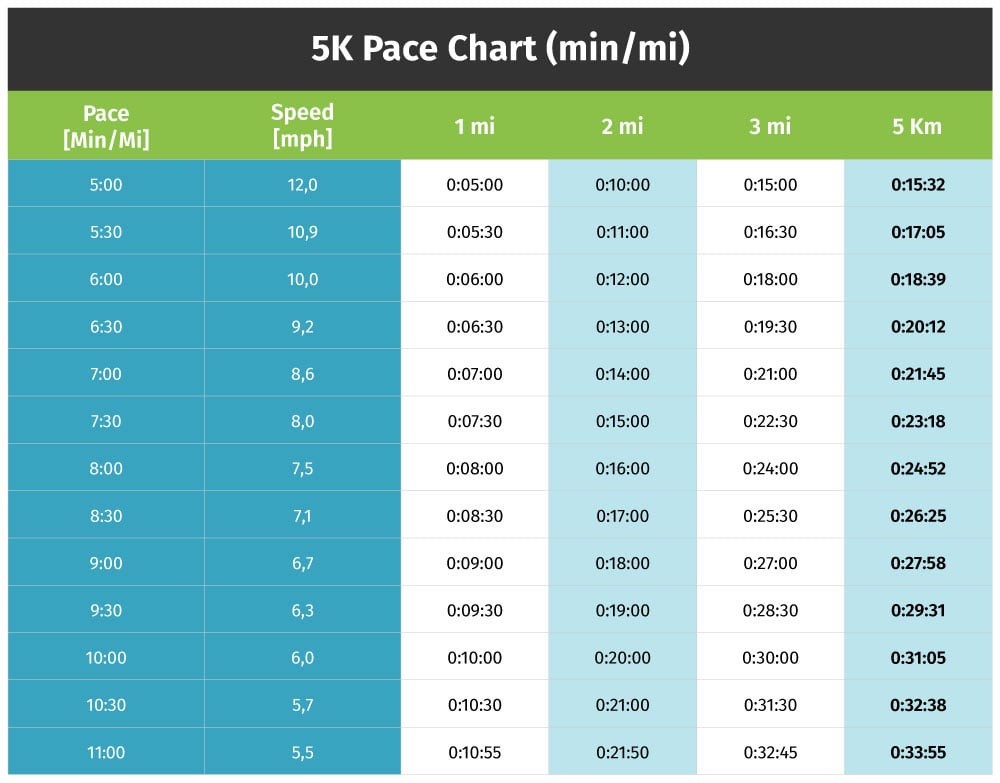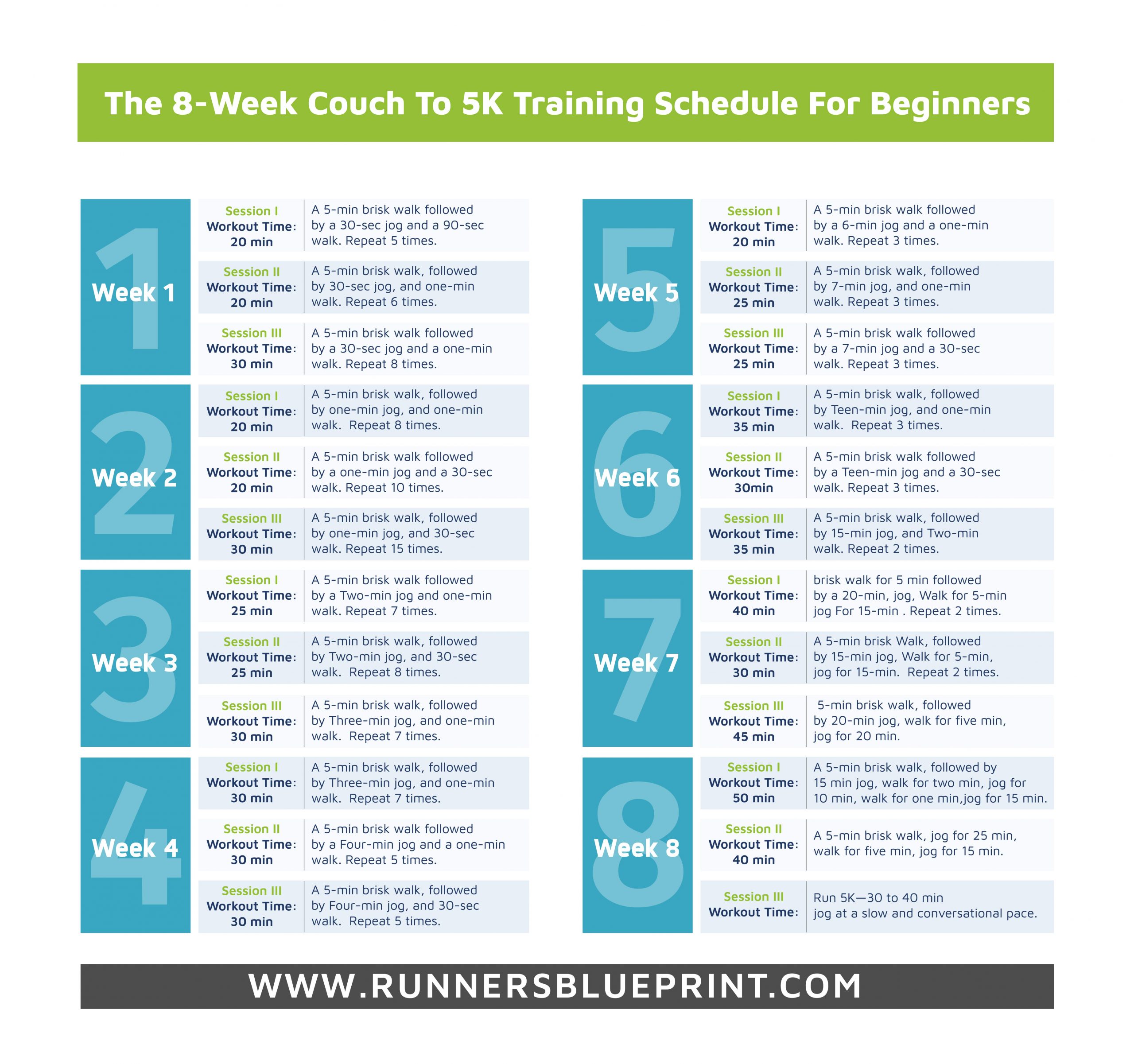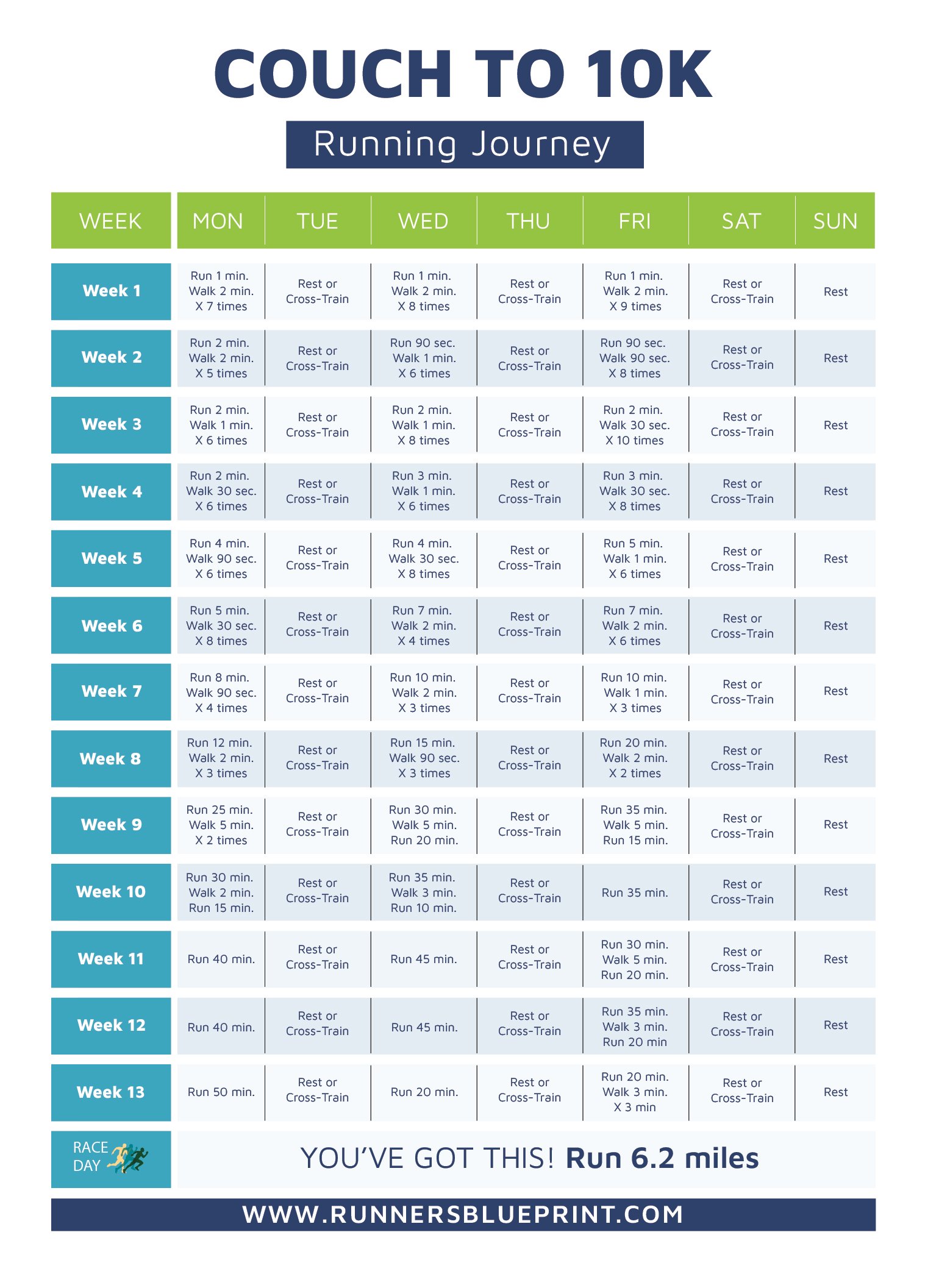Starting a running journey can feel overwhelming—I’ve been there. Running can seem intimidating when you’re out of shape or new to fitness.
But we all start somewhere.
Trust me, when I first laced up my shoes, I wasn’t sure I’d even make it around the block, let alone run for miles. But guess what? I did it, and so can you.
If you’re uncertain, let me introduce you to the Couch to 5K (C25K) plan.
This beginner-friendly program is designed to take you from sitting on the couch to completing a 5K (3.1 miles) in just 8 to 9 weeks.
As a coach, I love how simple and effective it is for new runners, and I’ve seen it work wonders for people at all fitness levels.
What is the Couch to 5K Program?
The Couch to 5K is designed to guide absolute beginners from sitting on the couch to running a full 5K (3.1 miles).
It mixes walking and jogging to gradually build your stamina—perfect for anyone new to running or those returning after a long break.
Josh Clark of Cool Running initially designed the C25K plan for his 50-something mother in the 1990s. Then, in 1996, Josh posted the plan on a blog called Cool Running.
Sadly the blog is no longer active (acquired by Active.com for an undisclosed amount). Since then, the program has exploded in popularity.
The original plan involves three workouts per week with a recovery day in between and a different schedule for each of the nine weeks.
This is achieved by making each session doable by mixing jogging and walking to gently build a solid cardio base without overdoing it.
You’ll slowly increase intensity from one week to the next without you or your body noticing.
Over the past 25 years, hundreds of running blogs have copied and tinkered with this original plan.
There are eight and 16-week versions, and I’ve included my own C25K 9-week plan in this article. The initial program takes around nine weeks to finish.
In 2016, this beginner’s running plan was also turned into a free app called C25K, becoming one of the most popular fitness apps.
C25K quickly became one of my favorite tools when working with beginners.
It’s approachable and doesn’t throw you into the deep end.
Whether you haven’t run since high school or never run a day, this plan is for you. Think of it as a gentle nudge to build your fitness at a manageable pace.
How Long Does it Take?
One of the best things about C25K is that it’s flexible. The standard plan takes nine weeks, but you can adjust it to suit your pace.
Some runners finish in 8 weeks, while others might take ten or even 12 weeks.
And that’s fine!
What matters is that you’re building a running habit, and that’s the real win.
Does Couch to 5K Actually Work?
In a word: YES. This beginner’s running plan has been the spark that gets millions of people into running.
If you’ve ever doubted your ability to run, the Couch to 5K will change your mind.
How come I’m so confident?
The plan works like a charm because it tells you EXACTLY what to do without needing to figure it out on your own—as long as you’re good at following instructions.
You’ll be training three times a week for around 30 to 40 minutes each session. I recommend you train every other day to give yourself enough recovery time.
The first week starts with around 6 to 8 one-minute jogs, broken up with 90 seconds of walking breaks between each.
Next, you tack on an extra 30 seconds to the jogging intervals in week two while adding a full-minute walking break between each jog. As a rule, these first few sessions should be practically painless, making the program ideal for anyone who isn’t used to running—or exercise.
I’ve Never Ran Before. Will I be able to improve?
The C25K plan is designed for beginners—like complete newbies without running experience.
You’re on the right path as long as you do the sofa to 5K at your own pace.
As a beginner, you’ll need time for your body and mind to adapt to running.
Push harder than last time, and you might develop injuries like Achilles tendonitis, runners knee, shin splints, or plantar fasciitis.
Will I Lose Weight?
A lot of people take up running hoping to lose weight. And yes, running can help, but it’s not a magic bullet.
Running burns calories, but you must combine it with a healthy diet to see results. Think of running as one part of the bigger picture—fitness, nutrition, sleep, and stress management all play a role in achieving your goals.
So if you run for 60 minutes, get home, and stuff your mouth with junk food because you feel stressed at work and aren’t sleeping well, you won’t shed many pounds.
In other words, how much weight you’ll lose (or if any) while running completely depends on your body and the variables I mentioned above.
The Average 5K Pace
Overall, the average 5K pace per mile is around 11 minutes for men and 13 minutes for women, resulting in finish times of roughly 35 and 42 minutes.
The keyword is a beginner. Veteran runners might be able to run a 7- or 8-minute mile pace, crossing the finish line within 20 to 25 minutes.
Check the chart below for more:
Get the full scope here.
What About Running on a Treadmill?
If running outside feels intimidating or the weather is an issue, you can complete this beginner’s running plan on a treadmill.
It’s a great option for those who prefer a more controlled environment for their workouts. I even have a guide on treadmill running to help you get started if that’s more comfortable for you.
How to Train for Your First 5K
As you work through the beginner’s running plan, don’t forget to include a good warm-up and cool-down routine with every workout.
Warming up prepares your body for action, reducing the risk of injury and improving your performance.
Cooling down after your run helps restore your heart rate and stretches out the muscles you’ve worked.
These are key parts of the training process, so don’t skip them!
Listening to Your Body
One of the most important lessons I’ve learned in my running journey is to listen to your body. Pushing too hard too soon can lead to injuries like shin splints or a runner’s knee.
If something doesn’t feel right, take a break. It’s always better to miss one run than to sideline yourself for weeks because of an injury.
Eat Well
Food is fuel. Accordingly, the main objective of eating should be to fuel you up, not to fill you up.
I keep saying this because it’s so true.
We are, after all, what we eat.
What you eat can make you a faster runner or slow you down like nothing else, so pay attention to what you put into your mouth.
Check out the following post on how to maximize your nutrition.
- The beginners guide to runners diet.
- The Guide to Pre- and Post-eating For Runners
- The 9 Diet Mistakes Runners Make
- The 10 Vitamins & Minerals Every Runner Needs
The Couch To 5K Plan In 8 Weeks
This sofa to 5K schedule includes running, walking, and resting. This mix will help you get fit enough for a 5K distance without getting hurt.
Starting slow this way will help tame the risks of injury, fatigue, and stress while also improving your overall experience, endurance, and training enjoyment.
For example, during the first two weeks, you’ll jog for 15 to 30 seconds, then walk for one to two minutes, repeating for 20 to 30 minutes.
As training progresses, you’ll jog—and eventually, run—more while taking shorter and fewer walk breaks.
Once you get to the last week, you can run just over three miles without stopping.
That’s the ultimate goal of this beginner training program.
Pick three days of the week and ensure you don’t run consecutive days. Feel free to cross-train or rest on your non-running days.
The Finish Line
By completing Couch to 5K, you’ll be running for 30 minutes straight and covering 5 kilometers without a hitch.
And let me tell you, crossing that finish line for the first time is an unforgettable feeling.
On race day, keep a steady pace, break the distance into manageable chunks, and go for it when you see that finish line! You’ll feel proud of how far you’ve come.
If you’re ready to take that first step, I promise it’ll be worth it. Running changed my life; I know it can do the same for you.























